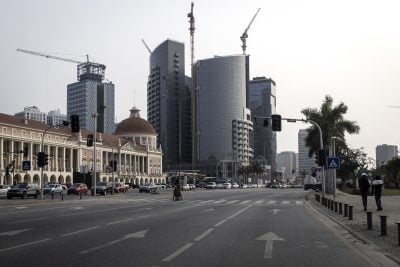For the first time in years, Zimbabwe has managed to show a surplus – something unthinkable less than three years ago. The experiment with the multiple currency system has worked, the economy is stabilising and business is shifting gears towards full throttle.
Zimbabwe’s banking sector has undergone a dramatic transformation in 2010, largely due to the restoration of the Reserve Bank of Zimbabwe (RBZ) as the lender of last resort and the adoption, amongst other government initiatives, of the multiple currency system.
Today, stability and growth is returning to a devastated economy, which has endured nearly a decade of hyperinflation and completely malfunctioning payment systems. The economy effectively completely collapsed in 2008 when hyperinflation escalated to the point where the Zimbabwean dollar was trading with the US dollar at an exchange rate of 10 trillion to 1. The RBZ still has an estimated $1.2bn debt incurred by the country’s decade of crisis.
In 2009, a multiple currency system was put into place to curtail this hyperinflation. Using two stable and trusted currencies, the South African rand and the US dollar, the creditworthiness of many businesses improved. The government recently announced that the currency system will remain in place at least until 2012.
The multiple currency system has proved to be an effective strategy. The Governor of the RBZ, Dr Gideon Gono, said that the banking sector has adapted favourably to the system. Dr Gono further commented, “The banking sector has, by and large, been stable in the sense that there are no deviant activities taking place that we have detected. All members are working towards the objective of turning around the economy.”
Last October, Zimbabwe’s total bank deposits had increased from $2.1bn to $2.3bn in September, showing a renewed confidence in the banking sector. These figures present an important shift from February 2009, when the multiple currency system was first adopted, when bank deposits totalled less than $200m.
Zimbabwe’s banking sector is heavily centred around the four top banks which control 60% of total deposits: CBZ, Standard Chartered, Barclays and Stanbic Bank. The remaining 25 banks account for the balance. The country has a large proportion of commercial banks, following a trend by many merchant banks moving into commercial banking.
No reliance on donors
When presenting his 2011 budget to Parliament in December, Minister of Finance Tendai Biti identified a diverse set of challenges affecting the economy and analysed 37 key points that touch on the political, social, institutional and economic areas that hamper economic recovery.
The focus of the government’s policies, he said, will be those “centred on dirigisme, controls, exchange rate distortions, overregulation, quasi-fiscal activities, lack of capacity and general
democratic deficit.”
Total government revenue in 2011, he forecast, will amount to $2.7bn, which the Minister stated will be entirely domestically sourced. Anticipated external funding, if it materialises, would increase the overall 2011 budget estimate to $3.2bn.
Since the country’s dependence on external funding has proved to have serious shortcomings, a decision was taken for only $500m of the budget to be received through foreign donors, who have not always been a reliable option and have failed in the past to match aid promises.
Donors pledged $800m in support of the current budget but only disbursed $360m. This is the first time in many years that a significant part of the budget will be dedicated to the education, health and agriculture ministries.
However, the announced budget came under criticism from labour groups, as they expected a more generous rise in the PAYE tax-free threshold. Wellington Chibebe, the secretary general of the Zimbabwe Congress of Trade Unions (ZCTU), describes it as “a slap in the face for workers who were expecting a meaningful review of the threshold.
With the aim of reigniting economic growth through the promotion of a reliable banking sector and also recognising that banks grow in direct proportion to the size of their local economy, the government has pumped $7m into the RBZ in November. The central bank is officially the lender of last resort, with the capacity to provide emergency credit to banks if there were the need – thereby providing a corresponding solidity and security to economic activity in the country for the first time in years.
The decision to revive the lender of last resort status is likely to be in response to the significant pressure upon the government from the IMF and also local banks.
In the absence of a reliable lender of last resort, and thus a security net, Zimbabwean banks have been heavily criticised for exercising too much caution in their lending capacity and therefore constricting activity in some of the most vital sectors of the economy.
Some have expressed worry that the $7m fund injection will be insufficient. John Mushayavanhu, the President of the Bankers Association of Zimbabwe wished to assure the community that the amount was significant and most likely sufficient, making clear his view that the outlook is very positive, “Every month we have seen an improvement in deposits and loans.”
Tendai Biti further assured the banking sector when he said that additional funds would be injected into the central bank if necessary, especially in circumstances where loan defaults started destabilising balances.
According to reports, the banking sector is effectively capitalised, with the core capital of 23 out of 26 banking institutions complying with the central bank’s set of minimum capital requirements, as of 31st October 2009. Under the new thresholds, by the end of 2010, commercial banks are required to have $12.5m as minimum capital, merchant banks $10m, building societies and discount houses $7.5m, and asset managers $500,000.
Smaller banks found it hard to make the necessary adjustments by the deadline, one that has already been moved back on several occasions. The latest deadline is more crucial than the others, as the Governor of the RBZ is reluctant to grant further extensions.
The deposit-to-loan ratio in October 2009 was 49.3%, a level very much under the normal international levels which oscillate between 70–90% , but reached 61.6% in November 2010. Experts believe with a newly capitalised RBZ, an increase in the loan-to-deposit ratio to the requisite 70% is entirely probable.
The capitalisation of the RBZ will have a positive effect on lending rates, which in the past were between 15–30% for 30 days, evidently making borrowing too expensive. The overnight lending rate will now be an indicator controlling the cost of borrowing. It is likely that when the RBZ charges a rate, banks will not be tempted to move above the given figure – the institution thus managing to play a genuinely effective role in affecting the maintenance of stable prices.
The RBZ estimates that in 2011, bank deposits will grow significantly, with experts already predicting 2010 to have closed with deposits in the region of $2.5bn. The strong growth in deposits and loans reflects an increasing confidence in the economy.
The newly revitalised RBZ, and the adoption of stable multiple currencies, is certainly a first step in nursing the banking sector back to health.
Although there still remains much to do, the President of the Bankers Association of Zimbabwe adds, “The current $2.3bn in bank deposits is not the only money in the country. Banks have to come up with measures to attract deposits”, confirming the need for further efforts to attract funds into the formal banking sector.
The RBZ as an institution faces important challenges. The Central Bank announced in December that it was planning to cut 1,600 jobs, the largest-ever cut announced in the country within a single institution; this comes after the announcement that employment costs were absorbing 60% of revenue. The RBZ is still in debt to the tune of $1.2bn, which is mostly owed by the government.
Dr Gono announced that his team incurred only 35% of the debt – the rest was inherited from previous administrations before his appointment in December 2003. Reductions in employment levels have been common across the country and experts believe that in the coming couple of years, most of Zimbabwe’s state enterprises, as well as those in the private sector, will have to undergo similar retrenchments.
The arrears are mainly a result of paying bills from the IMF, (vital to prevent the country being expelled from the organisation), the financing of the 2008 elections and President Robert Mugabe’s ambitious farm mechanisation programme.
The recent performance of the Zimbabwean economy has surprised many observers. It went through the horrendous ordeal of being one of the world economies with the bleakest of futures, yet has managed to turn itself around. Tendai Biti has even started talking about the possibility of a regional monetary union by 2013 – this aspiration would have been unthinkable only three years ago when inflation had peaked at 213% in July 2003, only a few months before Dr Gono was appointed at the head of the RBZ.
The country has also had to deal with the severe current budget circumstances largely under its own steam. The Chinese, for example, have generally been unwilling to support the economy with reasonable financial packages. The US and their allies are also very clear that they will not back a government in which Robert Mugabe, and his party, remain prominently centred.
Nevertheless, 2010 was the first time the country generated a cash surplus after many years. The IMF notes in a review that higher gold and platinum prices have boosted exports and government revenues and a significant appreciation of the rand has helped bolster competition and ease pressures.
The determined Minister Biti, recognising that the international situation necessitates Zimbabwe standing alone, on its own two feet, explains his approach to fiscal management as being guided by the dictum that “We eat what we gather”.
Want to continue reading? Subscribe today.
You've read all your free articles for this month! Subscribe now to enjoy full access to our content.
Digital Monthly
£8.00 / month
Receive full unlimited access to our articles, opinions, podcasts and more.
Digital Yearly
£70.00 / year
Our best value offer - save £26 and gain access to all of our digital content for an entire year!

 Sign in with Google
Sign in with Google 




